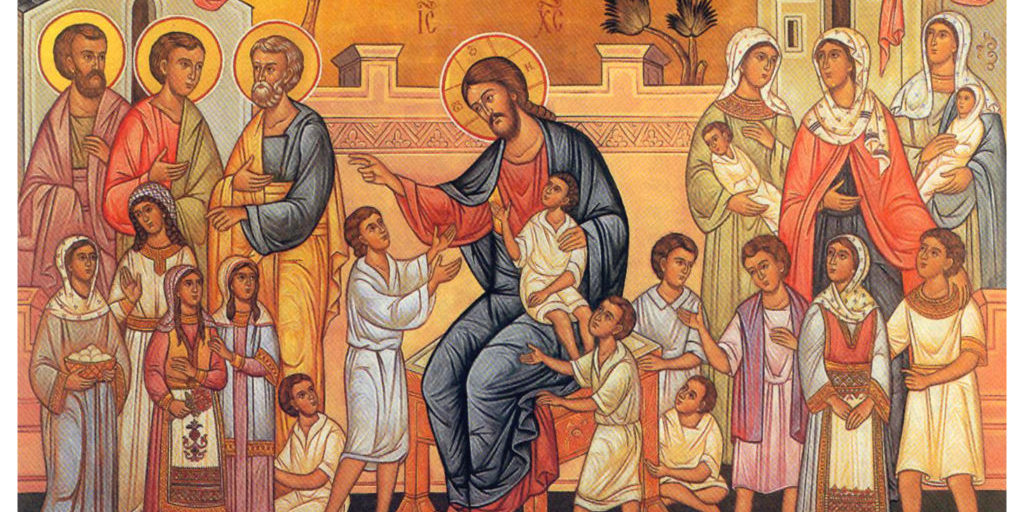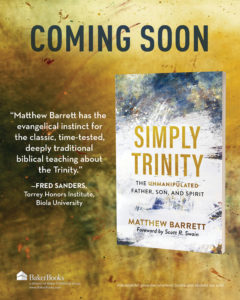
Teaching Kids Regular Rhythms of Worship
 When you think about explaining a worship service to kids, you might say something like this: “First, we sing. Then, we listen to the sermon.” But most worship gatherings involve more than music and preaching. When the church gathers, we follow a rhythm—or liturgy—of call and response. It’s like a big game of follow the leader. First, we hear God speak through his Word, and then we move in response to him.
When you think about explaining a worship service to kids, you might say something like this: “First, we sing. Then, we listen to the sermon.” But most worship gatherings involve more than music and preaching. When the church gathers, we follow a rhythm—or liturgy—of call and response. It’s like a big game of follow the leader. First, we hear God speak through his Word, and then we move in response to him.
Maybe you’ve noticed this rhythmic back and forth in your own church’s gatherings. First, you hear God’s Word call to you—perhaps in what we describe literally as the “call to worship” but then also in words of blessing or assurance and finally in the sermon’s words of instruction. Then, after you hear from God’s Word, you respond by lifting your voice in song, greeting others, giving, or by shouting “Amen!” We repeat this back and forth every week when we come to church, just as Christians have for hundreds of years.
Our “follow the leader” pattern of worship is built on two truths:
First, Worship Must Be Biblical.
This is what Reformed theologians throughout history have called the regulative principle of worship—the principle that all we do in worship should follow what we see prescribed and described in the Scriptures. In several places in the Bible, we find vivid warnings about what happens when God’s people—in their pride—disregard God’s instructions for worship. You might think of Nadab and Abihu offering strange fire (Lev. 10), Eli’s sons taking advantage of the congregation by stealing the choicest portions of their sacrifices (1 Sam. 2:12–36), or Ananias and Saphira lying to the apostles about their gift for the poor (Acts 5:1–11).
We find another such warning in the chronicler’s account of sixteen-year-old king Uzziah. Now Uzziah was a good king who feared God and did what was right in his sight (26:1–5). As a result, Uzziah had success against his enemies (vv. 6–8). Israel was strengthened (vv. 9, 11–15), and the nation prospered (v. 10). “But after Uzziah became powerful, his pride led to his downfall” (v. 16). Arrogantly, the king took it upon himself to enter the temple to burn incense on the altar as if he’d been commissioned as a priest in addition to being the king. The priests confronted Uzziah, but he responded to them with raging anger (vv. 17–19). So God afflicted Uzziah with leprosy until the day he died (v. 20). During the Reformation, John Calvin saw a need to help the church rehearse gospel rhythms when it gathered for worship. Click To Tweet
These stories show us the severity of God, and they warn us against the danger of offering worship that doesn’t accord with God’s standards. Even for a good king like Uzziah, unbiblical worship is a grievous sin that results in punishment and death.
But if we only tell these stories of warning to our kids, they may get a minimalist impression about worship. Worship just needs to be regulated—keep it by the book! But that’s not the whole story.
Second, Worship Keeps Rhythm with the Gospel.
Most of us are more like Uzziah than we care to admit. Our church worship services might conform with the forms of worship prescribed in the Bible but inwardly we can be more in love with tradition than we are in love with the Savior. The truth is that God wants more than our personal piety. He wants our hearts and the hearts of our children, and the best way to cultivate a heart that loves Christ—the best way to stir up affections for his good news—is to pray to him and sing about him again and again.
During the Reformation, John Calvin saw a need to help the church rehearse gospel rhythms when it gathered for worship.[1] His liturgy, or order of worship, followed three movements—a cycle of adoration, a cycle of renewal, and a cycle of commitment. Calvin drew the first movement, adoration, from Isaiah 6. You may know the first words of that passage: “In the year that King Uzziah died, I saw the Lord.”
Isn’t that amazing. After one of Israel’s greatest kings failed in worship, God gave a vision of true worship to his prophet. When Israel was still grieving the one who entered God’s temple improperly, God invited the prophet into his heavenly throne room. He called Isaiah to worship.
A wide variety of traditions follow Calvin in viewing gathered worship as a weekly rehearsal of the good news. Click To Tweet What did that worship look like? It involved adoration (“holy, holy, holy, v. 3), confession (“I am a man of unclean lips, v. 5), assurance of pardon (“your guilt is taken away,” v. 7), a call to commitment (“Who will go for us?” v. 8a), and a confession of faith (“Here am I. Send me!” v. 8b). It was a rhythm of worship that revealed God as holy and called upon sinners to respond with a cry for mercy. It was a rhythm of worship that promised forgiveness and cleansing because of a sacrifice. It was a rhythm of worship that called the forgiven to join God’s mission. It was the sort of worship that told the story of the gospel—the story that our kids need to rehearse again and again.
Because of COVID-19, many parents who typically drop off their kids in a children’s ministry classroom are attending worship services with their kids in tow. If that’s you, have you taken the time to explain the meaning behind each part of your church’s worship service to your kids? The words we use to describe the parts of a worship service and the particular orders of worship we follow differ from church to church. But a wide variety of traditions follow Calvin in viewing gathered worship as a weekly rehearsal of the good news. My prayer for you is that you’ll see attending worship together with your kids as an opportunity to share your passion for Christ with them. And my prayer for the next generation is that they will learn to love and enjoy their church’s regular gatherings, because, in worship, they hear Christ speak and then, by faith, respond.
[1] To learn more about this history, see Timothy J. Keller, “Reformed Worship in the Global City,” in Worship by the Book, ed. D. A. Carson, (Grand Rapids, MI: Zondervan, 2002), pp. 193–239, and Mike Cosper, Rhythms of Grace: How the Church’s Worship Tells the Story of the Gospel, (Wheaton, IL: Crossway Books, 2013), pp. 117–150.

